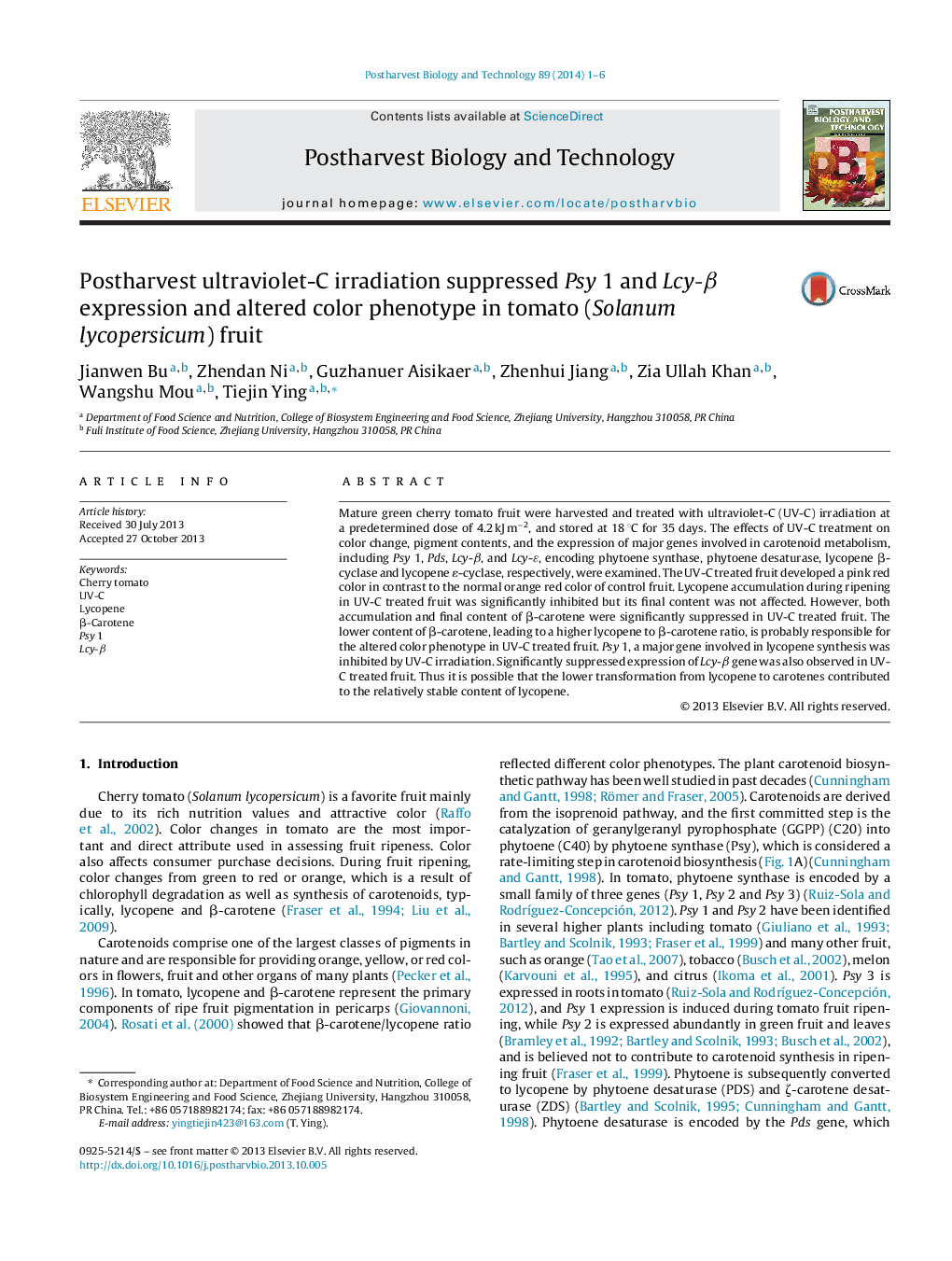| Article ID | Journal | Published Year | Pages | File Type |
|---|---|---|---|---|
| 4518308 | Postharvest Biology and Technology | 2014 | 6 Pages |
•UV-C treated tomatoes showed pink-red color in contrast to orange-red in the controls.•UV-C treated tomatoes had delayed accumulation but normal contents of lycopene.•UV-C treatment inhibited both accumulation and final contents of β-carotene.•Suppressed Lcy-β expression was associated with inhibition of β-carotene synthesis.•Lower transformation to carotenes might contribute to stable contents of lycopene.
Mature green cherry tomato fruit were harvested and treated with ultraviolet-C (UV-C) irradiation at a predetermined dose of 4.2 kJ m−2, and stored at 18 °C for 35 days. The effects of UV-C treatment on color change, pigment contents, and the expression of major genes involved in carotenoid metabolism, including Psy 1, Pds, Lcy-β, and Lcy-ɛ, encoding phytoene synthase, phytoene desaturase, lycopene β-cyclase and lycopene ɛ-cyclase, respectively, were examined. The UV-C treated fruit developed a pink red color in contrast to the normal orange red color of control fruit. Lycopene accumulation during ripening in UV-C treated fruit was significantly inhibited but its final content was not affected. However, both accumulation and final content of β-carotene were significantly suppressed in UV-C treated fruit. The lower content of β-carotene, leading to a higher lycopene to β-carotene ratio, is probably responsible for the altered color phenotype in UV-C treated fruit. Psy 1, a major gene involved in lycopene synthesis was inhibited by UV-C irradiation. Significantly suppressed expression of Lcy-β gene was also observed in UV-C treated fruit. Thus it is possible that the lower transformation from lycopene to carotenes contributed to the relatively stable content of lycopene.
